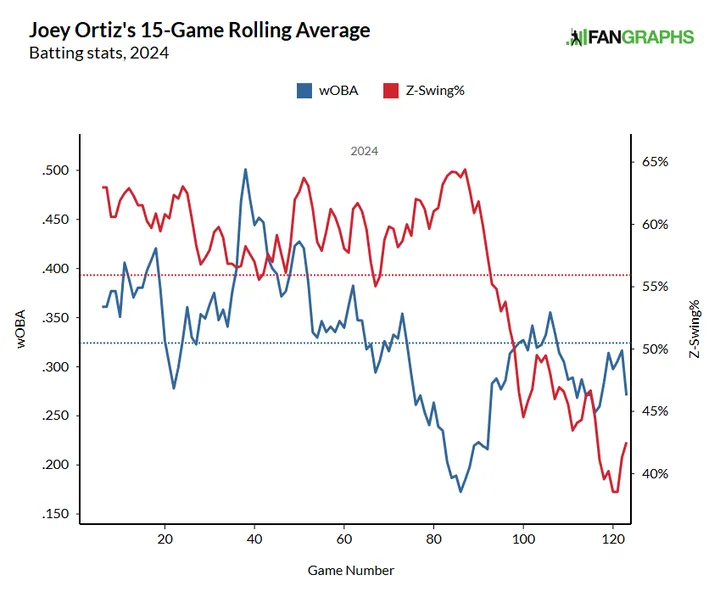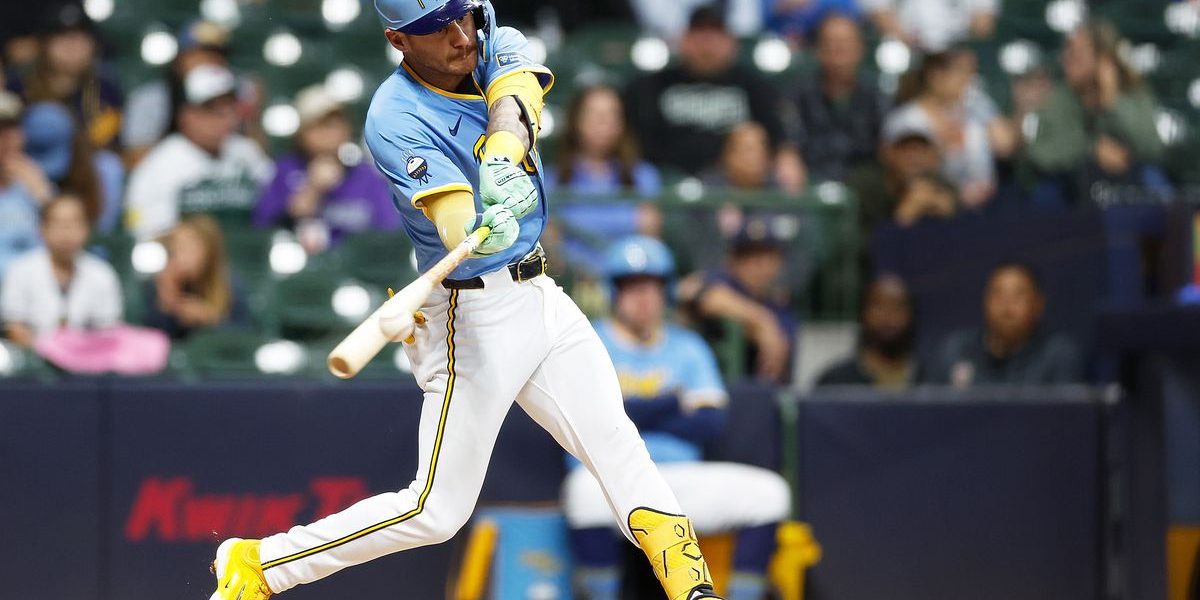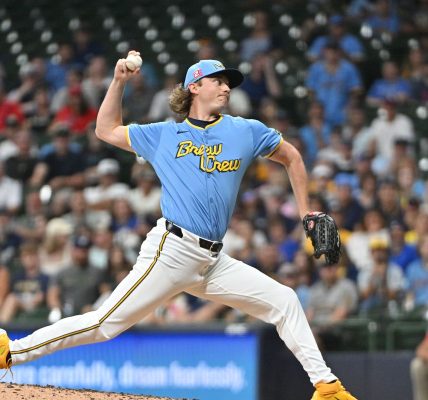The third baseman has been valuable on defense, but what about at the plate?
The Milwaukee Brewers have a bit of a reputation for defense, and Joey Ortiz has already established himself as one of the best at the hot corner.
While his contributions on defense have been a key to Milwaukee’s success, will Ortiz heat up at the plate in time for the playoffs?
Ortiz was already on fire at the start of the season. By the end of May he was hitting .288 with five home runs, leading to a 147 wRC+. He then went through a rough patch for about two months, dropping to a 73 wRC+ through June and July.
Since the start of August, he has rebounded to be perfectly fine with a 96 wRC+. That’s all led to an impressive rookie campaign overall, but what could lead to Ortiz finding that early season magic again?
Part of what makes Ortiz so impressive is his plate discipline. He has struck out just 19.8% of the time this season while walking at an 11.6% rate. That puts him among the best in the league with a combination of skills that helps carry him even through the down stretches.
Those skills have been wilting ever so slightly over the past few months, but the underlying approach and contact ability are key to Ortiz’s success. Since he doesn’t make hard contact at an exceptional rate, the consistency and prudent approach in his profile will be the foundation to his success against the best pitching in the playoffs.
Ortiz has been fine, as mentioned, since the start of August. His 96 wRC+ in that frame, along with his elite defense, is enough to be a highly valuable player. But there seems to be more offensive potential available as he continues his growth against major league pitching. His batting average in that time is just .220, a wildly low rate for a player with such high contact rates.
In particular, Ortiz has a 94% in-zone contact rate in this sample. Why would he be posting such a low batting average with that much contact? There seem to be two reasons that could lead to this. First, he’s hitting more fly balls recently. Since he doesn’t hit the ball hard, this might just be leading to more flyouts. And second, while he has great contact rates, he simply isn’t swinging much:
March-June: 16.9% line drive rate, 36.6% fly ball rate, 40.5% pull rate, 54.3% z-swing rate
August-September: 11.3% line drive rate, 43.8% fly ball rate, 34.6% pull rate, 44.6% z-swing rate
Ortiz might simply need to rediscover that line drive swing from earlier in this season. If it’s a matter of timing, Ortiz has the traits to make the most of his bat-to-ball skill and punish more pitches in the zone. When he was more aggressive earlier this season, by both swinging more and pulling the ball more, he found much more success.
While he has the ability to make plenty of contact, there is understandably a sense to simply not swing at everything in the zone. As the season has gone on, he’s been more selective not just to avoid strikeouts, but also to attempt to do more damage. It doesn’t accomplish much to simply hit a ball weakly into play for the sake of it.
This graph shows his 15-game rolling average for wOBA and in-zone swing rate. As you can see, his aggression in the zone has massively dipped after his results were simply not coming through around the 80-game mark.

This might just be an adjustment for a player in his first season. While the results haven’t been stellar over the past few months, there is still a lot to love with Ortiz. His discipline could be a crucial key to unlocking and refining his contact quality once he faces playoff-caliber pitching.

